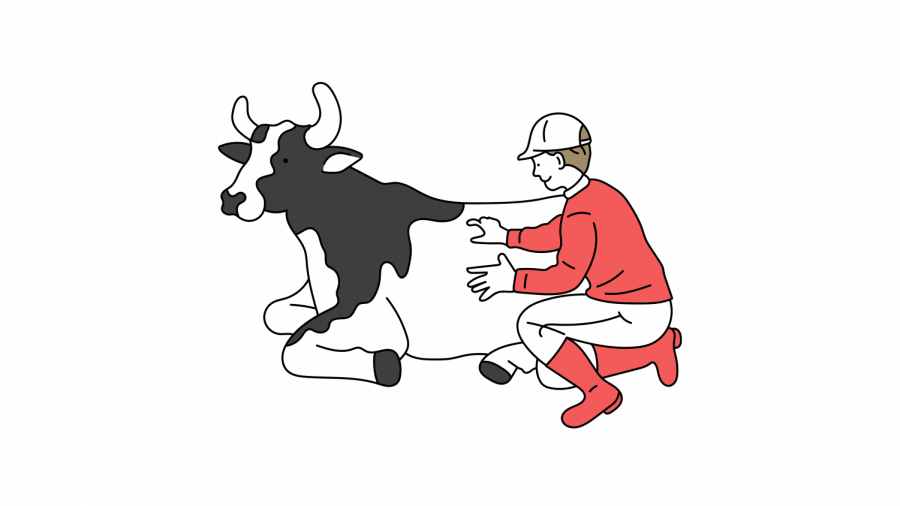The case for cows on campus: Improving enrollment and agricultural literacy
February 25, 2020
Students in the agriculture department have to drive 15 minutes away from campus to visit WKU’s “Farm”—800 acres of rolling green pastures that most WKU students will never get the chance to see.
Imagine strolling through campus on a warm sunny day as a gentle breeze blows by and you see cows grazing in a nearby pasture. The aesthetic value of cows is unparalleled in branding an area as idyllic or picturesque. What is more peaceful than seeing the lazy munching of these fat farm animals?
The WKU Agriculture Research and Education Center has beef and dairy cattle, horses, goats, a vineyard, various crops and even a two-hole golf course. However, the farm is located about 15 minutes from campus, according to junior agriculture major Alysha Kittle.
Kittle said it can be an obstacle for some students to get there, though a lot of professors and other students are willing to help students get rides.
“The AREC center is also very beneficial for students to be able to get hands-on experience with animals,” Kittle said.
Integrating elements of the farm, such as cows, closer to the main campus would benefit the university and students of all majors in a variety of ways.
First, consider WKU’s main competition in bringing in new students: the University of Louisville and the University of Kentucky.
These schools offer more degree programs, more resources, better athletic programs and larger city life. But WKU is cheaper and has a nice campus. The cherry trees, the hills and the architecture all contribute to an aesthetically pleasing environment.
The campus visit is the single most important recruiting tool for colleges, according to a study published in the Strategic Management Quarterly journal.
So strengthening the already attractive campus should be a top priority for the school. Having an area for dairy cows, open greenhouses and a wider array of plants on campus could create an unforgettable campus visit experience and increase enrollment.
For students, these improvements could not only benefit mental health, but also improve agricultural literacy for people from urban areas as well as provide a homey feel for students who grew up on farms or in pastoral environments.
A vast array of scientific literature has shown the connections between mental health and environment, but it shouldn’t be necessary to prove. Most people understand that pleasing environments reduce stress.
Cows and more greenspaces would also expose students to agriculture, and it would increase their chances of learning about where food comes from and how to grow and manage plants.
One Department of Agriculture study from the ‘90s found that one in five adult respondents did not know that hamburgers were made from beef.
Some schools already have cows on campus. At the University of California, Davis, the dairy cow has consecutively won the Best On-Campus Animal award, according to the school newspaper, the California Aggie.
The University of Wisconsin-Madison is well known for their dairy science program and cows. Kent Weigel, the head of their dairy science department said, “Having a dairy herd in town is rather unique. I think it shows the importance of dairy science here,” Weigel said. “And having the cows on campus is a great recruiting tool. Students don’t have to travel off campus to take part in labs and live animal instruction.”
Incorporating more natural life and programs to learn about agriculture will benefit prospective students, agriculture majors and current students in any major. #CowsOnCampus
Opinion Editor Jake Dressman can be reached at [email protected].













